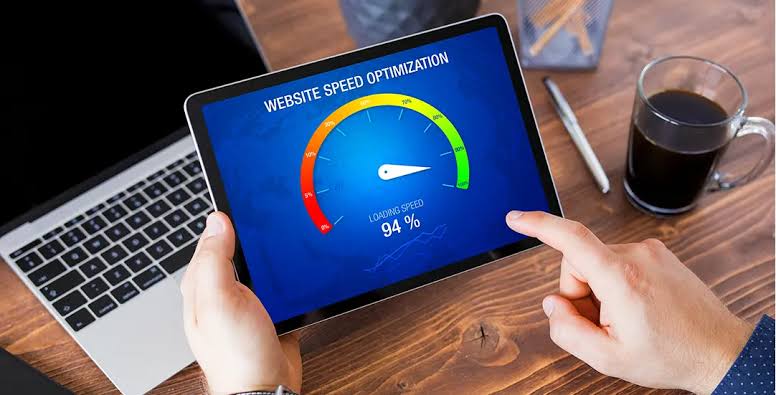
Speed Up Or Lose Out: The Ultimate Guide To Website Speed Optimisation
Want a faster website? Learn website speed optimisation techniques for 2025. Improve load time, boost SEO performance, and enhance user experience today!
Table of Contents:
- A Faster Website Starts Here: Discover the Magic of Website Speed Optimisation
- Why Website Speed Optimisation Matters
- Best Practices for Website Speed Optimisation in 2025
- Optimise Images and Videos
- Minimise HTTP Requests
- Leverage Browser Caching
- How to Improve Website Load Time for Better SEO
- Boost Website Performance with Effective Techniques
- Faster Sites, Smarter Strategy: The Final Word on Website Speed Optimisation
A Faster Website Starts Here: Discover The Magic Of Website Speed Optimisation

In today’s fast-paced digital world, users expect websites to load instantly. If your site takes too long to load, visitors will leave before they even get the chance to engage with your content. Website speed optimisation has become crucial for businesses aiming to offer superior user experiences and rank higher on search engines. If you want to stay ahead in 2025, improving your site’s speed is not just an option — it’s a necessity.
This blog explores the importance of website speed and shares actionable tips for website speed optimisation in 2025. We’ll also discuss how optimising your website’s performance can enhance SEO rankings, boost user satisfaction, and improve conversion rates.
Why Website Speed Optimisation Matters
Before diving into the best practices for 2025, it’s important to understand why website speed optimisation is essential. A slow-loading site can cause various problems for your business, including:
- Higher Bounce Rates: Users are more likely to abandon your site if it takes more than a few seconds to load.
- Poor User Experience: Slow websites lead to frustration, which can drive potential customers away.
- Negative Impact on SEO: Google’s algorithm considers website speed as a ranking factor. Slow sites are penalised, which can lower your visibility in search results.
With these factors in mind, website speed optimisation should be a top priority for your digital strategy. Now let’s explore the best practices for optimising your site in 2025.
Best Practices For Website Speed Optimisation In 2025
1. Optimise Images and Videos
One of the most effective ways to speed up your website is by optimising your media files, particularly images and videos. Large files can significantly slow down your website, so it’s essential to compress them without sacrificing quality. There are various tools available, such as TinyPNG and ImageOptim, that allow you to reduce file size while maintaining the visual quality.
For videos, consider using external hosting platforms like YouTube or Vimeo, instead of hosting videos directly on your website. This can dramatically reduce the strain on your server and improve website performance.
2. Minimise HTTP Requests
Every time a user visits your website, their browser sends HTTP requests to load various elements like images, scripts, and stylesheets. The more elements your site has, the more HTTP requests are made, which can slow down load time. Minimising HTTP requests by reducing the number of elements on a page is a smart strategy for website speed optimisation.
You can achieve this by simplifying the design, combining CSS files, and eliminating unnecessary scripts. A clean, minimalistic design doesn’t just look good — it also performs better.
3. Leverage Browser Caching
Browser caching allows frequently visited pages on your website to load faster by storing some elements (like images and scripts) in a user’s browser. This reduces the number of requests to your server and speeds up the loading process.
By setting expiry dates for static resources, you can ensure that users’ browsers load your site faster each time they visit. This simple yet effective technique is one of the easiest ways to boost website performance.
How To Improve Website Load Time For Better SEO
Improving website load time is not only important for user experience but also crucial for SEO. Google and other search engines consider site speed as a ranking factor. Faster websites are likely to rank higher, giving you a competitive edge.
Some tips for improving load time include:
- Reducing Server Response Time: A slow server can hinder website performance, so consider upgrading your hosting plan if needed.
- Use a Content Delivery Network (CDN): A CDN can store your website’s static files in multiple locations worldwide, allowing users to access them from the closest server, improving load times.
- Minimise Redirects: Redirects add additional HTTP requests, so minimise them as much as possible to enhance website speed.
Boost Website Performance With Effective Techniques
To optimise website speed further, implement the following techniques:
- Use Gzip Compression: Gzip compression reduces the size of your website’s files, allowing them to load faster. Ensure your server is configured to use Gzip to compress files such as HTML, CSS, and JavaScript.
- Prioritise Critical Content: Make sure that important content, such as text and images above the fold, loads first. This helps users engage with your site while the rest of the page continues loading in the background.
- Use Lazy Loading for Images: Lazy loading ensures that images load only when they come into view on the user’s screen. This can drastically reduce initial load time and improve website speed.
Faster Sites, Smarter Strategy: The Final Word On Website Speed Optimisation
In conclusion, website speed optimisation is more important than ever. A fast website improves user experience, boosts SEO performance, and increases conversion rates. By following the best practices for website speed optimisation in 2025, such as optimising media, minimising HTTP requests, and leveraging browser caching, you can ensure that your website performs at its best.
Don’t let slow load times cost you customers. Start implementing these strategies today to stay ahead in the competitive digital landscape.





